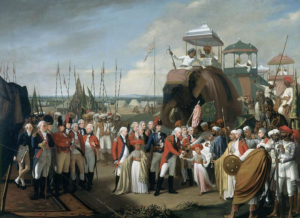
Aryabhata (476 CE – 550 CE) was one of the most brilliant mathematicians and astronomers of ancient India. His contributions laid the foundation for many mathematical and astronomical principles that influenced scholars in India, the Islamic world, and later Europe. His works, particularly the Aryabhatiya, introduced groundbreaking concepts in algebra, arithmetic, trigonometry, and celestial mechanics. This article delves deeply into his life, achievements, and lasting legacy.
Early Life and Background
Despite Aryabhata’s immense contributions, little is known about his early life. His exact place of birth remains uncertain. Some historical records suggest that he was born in Kusumapura, near modern-day Patna in Bihar, while others believe he may have been from Kerala, a region known for its scholarly traditions. Regardless of his origins, Aryabhata spent much of his academic life at Kusumapura, which was a major center of learning and possibly home to the renowned Nalanda University.
Historians believe Aryabhata received an advanced education in mathematics and astronomy, which were highly developed fields in ancient India. His exposure to the rigorous intellectual atmosphere of Nalanda or similar institutions enabled him to develop revolutionary ideas that significantly advanced these disciplines.
Mathematical Contributions
Aryabhata’s contributions to mathematics were vast and fundamental to the development of modern mathematical theories. His work covered number theory, algebra, trigonometry, and geometry, providing the groundwork for scholars in subsequent centuries. Some of his most notable contributions include:
1. Decimal Place Value System (but Not Zero)
Although Aryabhata did not invent the concept of zero, he played a significant role in developing the place-value system. He used Sanskrit verses to encode numerical values, a method known as the “Aryabhata notation.” His work helped refine the decimal number system, which was later transmitted to the Islamic world and Europe, forming the foundation of modern arithmetic. The formal use of zero as a numeral came later, primarily through the work of Brahmagupta in the 7th century CE.
2. Approximation of Pi (π)
Aryabhata provided one of the earliest approximations of π, stating that it was irrational. He calculated π to be approximately 3.1416, which was remarkably close to its actual value. He expressed this idea in poetic form, which was a common way of preserving knowledge in ancient India.
3. Algebra and Quadratic Equations
His work in algebra included solving linear and quadratic equations using innovative techniques. Aryabhata’s mathematical formulations laid the groundwork for later mathematicians like Brahmagupta, Bhaskara I, and Al-Khwarizmi. His influence can be seen in the later development of algebra in Islamic mathematics and, ultimately, European algebraic theories.
4. Trigonometry and Sine Tables
Aryabhata developed an early form of trigonometry, defining the sine function as “jya,” cosine as “kojya,” and versine as “utkrama-jya.” His sine tables, computed using a precise numerical method, helped advance the study of celestial mechanics and navigation. His trigonometric functions were later adapted by Islamic scholars and became crucial in the development of trigonometric methods used today.
5. Aryabhata Algorithm for Indeterminate Equations
Aryabhata developed a method for solving indeterminate equations, a precursor to continued fractions. His algorithm, known as the “Aryabhata algorithm,” was later refined by mathematicians in India and the Middle East. This method influenced later mathematical techniques used to solve complex number theory problems.
6. Influence on Calculus and Modern Mathematics
Although Aryabhata did not explicitly develop calculus, his mathematical techniques, especially in approximation and algebraic manipulation, set the stage for later developments in differential equations and integral calculus. Indian mathematicians like Madhava of Sangamagrama built on Aryabhata’s work, influencing European mathematicians like Newton and Leibniz centuries later.
7. Impact on Engineering and Technology
Aryabhata’s mathematical principles have been applied in various fields, including engineering, physics, and computer science. His work in number systems influenced modern binary code, a fundamental aspect of computing. Additionally, his trigonometric insights contributed to advancements in mechanical engineering and astronomy.
Astronomical Achievements
Aryabhata’s astronomical insights were as groundbreaking as his mathematical contributions. He approached celestial phenomena with scientific reasoning, departing from mythological explanations that dominated ancient thought. His astronomical studies include:
1. Rotation of the Earth (Heliocentric Elements)
One of Aryabhata’s most revolutionary ideas was the proposition that the Earth rotates on its axis. He explained that the apparent movement of the stars and the cycle of day and night were due to this rotation. This heliocentric approach was centuries ahead of its time, predating the works of Copernicus and Galileo.
2. Explanation of Solar and Lunar Eclipses
Aryabhata debunked the prevailing mythological explanations of eclipses, proposing a scientific model instead. He correctly identified that solar and lunar eclipses occurred due to the Earth’s shadow falling on the Moon and the Moon blocking the Sun, respectively.
3. Sidereal Periods and Orbital Calculations
Aryabhata accurately calculated the sidereal rotation period of the Earth and the orbits of planets. His astronomical tables helped determine planetary positions with great precision, influencing later Islamic and European astronomers.
4. Length of a Year
Aryabhata calculated the length of the year as 365.258 days, an estimate remarkably close to the modern value of 365.2422 days. His calculations showcased his deep understanding of celestial mechanics.
The Aryabhatiya
Aryabhata’s most influential work, the Aryabhatiya, was composed in 499 CE. This Sanskrit text consists of 121 verses divided into four sections:
- Gitikapada – Covers large numbers and measurements of time.
- Ganitapada – Focuses on arithmetic, algebra, and trigonometry.
- Kalakriyapada – Deals with planetary movements and timekeeping.
- Golapada – Explores spherical astronomy and celestial mechanics.
The Aryabhatiya was widely studied across India and later translated into Arabic during the Islamic Golden Age, influencing medieval astronomers such as Al-Khwarizmi and Al-Biruni.

Influence on Later Scholars
Aryabhata’s impact on mathematics and astronomy extended beyond India. His works were translated into Arabic, influencing scholars in the Middle East and later in Europe. Some key figures influenced by Aryabhata include:
- Al-Khwarizmi (9th century) – The Persian mathematician who further developed algebra based on Aryabhata’s concepts.
- Al-Biruni (11th century) – The Islamic scholar who studied Indian mathematics and astronomy, acknowledging Aryabhata’s influence.
- European Astronomers – Aryabhata’s heliocentric ideas resurfaced in the Renaissance, aligning with Copernican and Galilean models.
The Legacy of Aryabhata
Aryabhata’s legacy is commemorated in many ways:
- India’s first satellite, launched in 1975, was named Aryabhata in his honor.
- His work continues to be studied in mathematical and astronomical research.
- Various institutions and scholarships bear his name, celebrating his contributions to science.
Aryabhata was a visionary whose contributions to mathematics and astronomy transformed these fields. His scientific approach challenged prevailing myths, replacing them with logical explanations and accurate calculations. His work influenced scholars across centuries, leaving an indelible mark on global scientific progress. Today, Aryabhata’s name remains synonymous with the rich intellectual heritage of ancient India, underscoring his enduring significance in human history.






